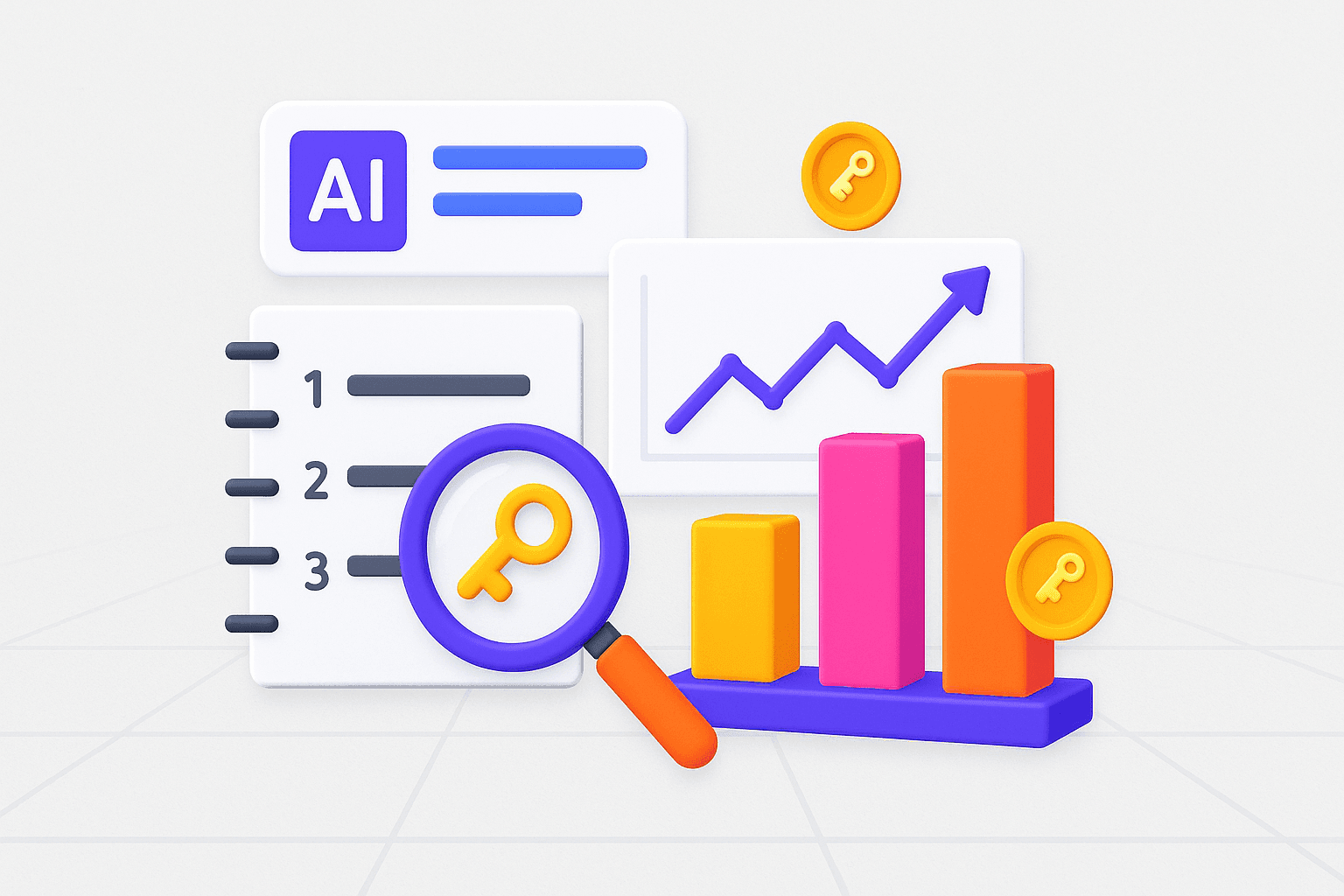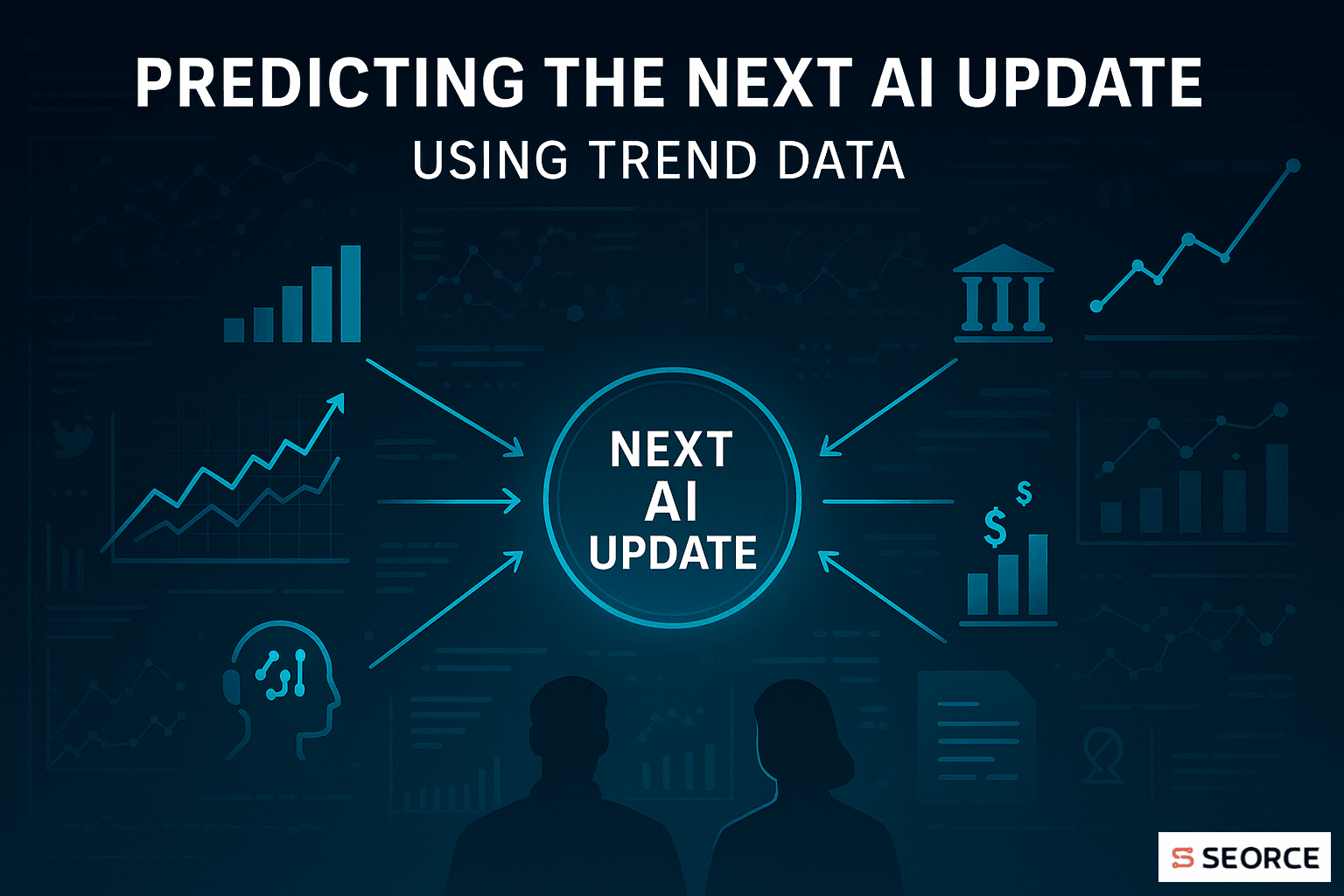What is Content Gap Analysis?
A content gap analysis helps you find important topics you haven’t covered yet or could improve on to boost your search rankings.
This might involve discovering keywords your competitors rank for, but you don’t. It can also mean identifying topics to add to your strategy to cover every stage of the customer journey.
You can also use a content gap analysis to review your existing content and find ways to make it better.
For instance, you could update an old article to solve more customer problems or include expert tips to make it more unique and helpful.
Why Is Content Gap Analysis Important?
Conducting a content gap analysis can significantly enhance your content's effectiveness. Here's how it helps:
- Understanding Your Audience: It shows what your audience wants to know but can’t find on your site. When you create content that answers their questions, you build trust and keep them engaged.
- Staying Ahead of Competitors: You can spot where competitors lack content and fill those gaps. This makes your brand stand out as a better resource.
- Improving SEO: By addressing missing keywords or topics, your content ranks higher in search results. This brings more people to your site.
- Keeping Content Relevant: Regularly checking for gaps keeps your content fresh and useful as trends and audience needs change.
In short, content gap analysis helps you create better, more targeted content that attracts and retains your audience while boosting your online visibility.
How to Do an SEO Content Gap Analysis using AI
Now, Let’s find out how to perform a content gap analysis with AI by following these simple steps:
1. Identify Your Competitors
To find out who your SEO competitors are, start by thinking about the main words people use to search for your product or service. For example, if you have a pizza shop, words like "best pizza" or "pizza delivery" are important. Type these words into a search engine like Google and see which websites show up at the top.
These top websites are your competitors because they are attracting the customers you want.
Another way to find competitors is to use special tools that help with SEO. Tools like Jaggery consulting can show you which websites are ranking for the same keywords you're interested in. These tools can also tell you how strong these websites are in terms of SEO. This information helps you understand who you're up against and how tough the competition is.
It's important to remember that your online competitors might be different from your real-world ones. For instance, a food blog might not sell pizza but could still rank high for "best pizza" searches, taking away potential customers.
So, when identifying competitors, look at all websites that show up for your important keywords, even if they don't offer the same products or services as you.
2. Gather Competitor Content Data
To understand how your competitors are succeeding, start by looking at their most popular pages. These are the articles or posts that attract the most visitors. Studying these pages can help you see what topics they cover and how they present their information. This helps you learn what your audience is interested in and what your competitors are doing well.
For example, if you run a website about healthy eating, and you notice that a competitor's article on "10 Easy Healthy Breakfast Recipes" gets a lot of views, it shows that people are interested in simple and healthy meal ideas. This insight can guide you to create similar content that meets your audience's needs.
On top of that, pay attention to how your competitors organize their content. Do they use bullet points, images, or videos? Is their writing style formal or casual? Understanding these elements can help you improve your own content to make it more engaging and user-friendly.
3. Find Your Underperforming Content
Finding content that isn’t doing well can help you discover pages that are missing important information you can add.
For example, you can check Google Search Console (GSC) to find pages that used to get lots of visitors but don’t anymore. This drop in visits means those pages now have gaps that make them less helpful to people.
To begin, go to GSC and click on "Search results" on the menu on the left side.
Click on 'More' and then choose 'Compare.' After that, select a time period. It's a good idea to pick at least three months of data to avoid looking at short-term changes in performance.
Next, go to the table and click on "Pages." This will show you your top pages and how clicks and impressions have changed during your selected time.
Look for pages where clicks have dropped. After that, compare these pages to your competitors' best content for the same main keywords to spot content gaps.
3. Identify Content Gaps
Identifying content gaps means finding topics or questions your audience is interested in that you haven't covered yet. This helps you create content that answers their needs and keeps them engaged.
Start by looking at the questions people ask about your subject. For example, if you have a website about gardening, you might find that many people are curious about how to grow tomatoes indoors. If you haven't written about this, it's a content gap.
Next, check out what your competitors are writing about. If they have articles on topics you haven't covered, these are also content gaps. For instance, if other gardening sites have tips on indoor tomato gardening and you don't, that's a gap you can fill.
Finding these gaps can help you create new content that answers your audience's questions and keeps them coming back for more. This not only helps your audience but also improves your website's performance.
4. Generate Content Ideas
Creating content ideas is like finding new topics to talk about that people are interested in. To start, think about the questions your friends or classmates ask you. These questions can give you clues about what others want to know. For example, if someone asks, "How do plants grow?" you might write about the life cycle of a plant.
Another way to find ideas is to look at what people are talking about online. Websites like Quora or Reddit have sections where people ask questions and share answers. Reading these can show you what topics are popular and what information people are seeking. This helps you understand what your audience is curious about.
You can also pay attention to the news and current events. If something big happens, like a new discovery or an important event, people will want to learn more about it. Writing about these topics can attract readers who are interested in the latest information.
Lastly, think about your own experiences and what you know well. Sharing your personal stories or lessons you've learned can be both interesting and helpful to others. This not only provides valuable content but also makes your writing unique and authentic.
5. Prioritize Content Creation
Prioritizing Content Creation means figuring out which content ideas will bring the most value to your business. Once you've found the content gaps, you need to decide which ones are the most important to work on first. This will help you focus your efforts on content that can make a big impact.
To prioritize, start by looking at factors like search volume, competition, and relevance. AI tools can help you analyze these factors quickly and suggest the best topics to focus on. For example:
- Search volume tells you how popular a topic is.
- Competition helps you understand how hard it will be to rank.
- Relevance ensures the topic matches your audience’s interests.
- AI tools can give insights into which topics are trending.
Once you've considered these factors, you can create a content plan that targets the highest-priority topics. This way, you make sure your time and resources are spent wisely. AI can also assist by providing suggestions for content types that are performing well for similar keywords.
Now that you’ve narrowed down your topics, it's time to allocate resources and set deadlines for each piece of content. This ensures that you stay organized and create content consistently.
6. Conduct Market Research
One of the best ways to come up with content ideas that match what your audience wants is to simply ask them directly.
Conducting a survey can help you understand your audience's biggest questions, problems, needs, and goals. You can use this feedback to shape your website content.
To do this, create a simple, anonymous survey using Google Forms and send it to your target audience.
Here are some questions you could ask in the survey:
- What questions do you have about [topic]?
- What challenges do you face with [topic]?
- What solutions have you tried before?
- Why didn't those solutions work for you?
- What are the top three things you look for in a [service/product]?
- Where do you usually go to find solutions like [service/product]?
- What makes you choose [Solution A] over [Solution B]?
The answers you receive will give you a wealth of content ideas that directly address the real needs and concerns of your potential customers.
7. Create and Optimize Content
When you're ready to write, AI tools can help you get started. They can help you come up with ideas, check your grammar, and make sure your content is easy to read. For example, Jaggery Consulting can help you create articles that are both informative and optimized for SEO.
After you write your content, you'll want to make sure it reaches the right people. AI tools can help by suggesting the best keywords to use, which can make your content pop up more on search engines. Jaggery consulting is great for finding keywords that will work for your article.
Lastly, once your content is live, you can use AI to see how well it's doing. You can track things like page views and how long people are staying on your page. This lets you know what's working and what needs improvement so you can keep making your content better.
Case Studies
Looking at real examples shows how AI-driven content gap analysis can find hidden chances and improve your content plans. Here are a few good examples:
Case Study 1: Reliance Industries' AI Integration
Reliance Industries, led by Chairman Mukesh Ambani, has started a big plan to use artificial intelligence across its different businesses. A key part of this plan is "JioBrain," a set of AI tools and apps designed to improve operations in areas like energy, textiles, and telecommunications.
This platform uses AI to improve all business processes, helping with everything from gathering data to making decisions faster and more efficiently. It aims to make everything work more smoothly with real-time, data-based insights and automation.
To support this AI integration, Reliance has announced plans to build a Gigawatt-scale AI-ready data center in Jamnagar, Gujarat, powered entirely by renewable energy. This facility is expected to provide the computational power necessary for advanced AI applications and services.
On top of it, Reliance has also teamed up with NVIDIA to create a large language model specifically for India. This model is designed for AI applications and is trained to understand the country’s many languages. The goal of this partnership is to build AI systems that are much more powerful than current supercomputers in India. These advanced AI tools will help develop new applications and services for Jio’s 450 million customers.
The integration of AI through JioBrain has led to several notable outcomes:
- Better Customer Service: With AI helping out, customers get quicker replies and services that are more tailored to what they need. This means happier customers.
- Smoother Operations: AI has made work faster and easier by cutting down on the need for humans to do things manually, so everything runs better.
- Big Changes in Different Areas: In farming, AI helps manage resources better, so crops grow better. In schools, AI makes learning more personal and easier to access. And in hospitals, AI is helping doctors with more accurate diagnoses and faster treatments.
Furthermore, the partnership with NVIDIA has really helped Reliance stand out as a leader in building AI infrastructure in India. This is playing a big role in making India a top player in the global AI scene.
Case Study 2: Tata Consultancy Services (TCS) and AI-Driven Content Optimization
Tata Consultancy Services (TCS) is leading the way in using artificial intelligence to improve its content strategies. The company has created AI tools that analyze existing content to find gaps and areas for improvement.
Machine learning algorithms help TCS predict content trends and understand what the audience needs. This makes it possible to create more focused and effective content strategies. As a result, content becomes more relevant, which helps increase engagement and customer satisfaction.
This integration of AI into TCS's content optimization efforts has yielded significant outcomes:
- Boosted Revenue: 86% of top business leaders have used AI to either increase their current revenue or create new sources of income. This shows that AI is key to driving growth.
- Focus on Innovation: 69% of businesses are focusing on using AI to innovate and grow revenue, rather than just cutting costs or improving productivity.
- Positive Attitude: 57% of executives feel excited or optimistic about how AI will impact their business, showing strong confidence in its potential.
These results highlight how TCS is using AI to improve its content, which has led to better business performance and stronger customer engagement.
Final Thoughts
AI is a great way to help businesses find hidden content gaps and improve their content strategies. With tools like Natural Language Processing, Machine Learning, and Data Mining, companies can easily spot areas where content is missing, figure out what their audience needs, and get useful insights from tons of data. Using AI for this means gathering and processing data to find opportunities to grow. While there are challenges around data privacy and ethics, AI's benefits are huge. As AI keeps improving, businesses need to stay on top of the changes to keep their content strategies up to date.
Frequently Asked Questions
What is content gap analysis, and how does it help my website?
Content gap analysis is when you check what topics or keywords your competitors are covering that you’re not. By filling these gaps, you can make your website more relevant and improve your ranking on search engines.
How can AI help me find content gaps on my website?
AI tools can look at a lot of data and compare your website’s content with what competitors are offering. This helps find missing content areas and gives you ideas to create new content that your audience wants.
What AI tools can help with content gap analysis?
Some popular AI tools for content gap analysis are SEMrush, MarketMuse, and Clearscope. These tools show you what keywords are working, what your competitors are doing, and where you can improve your content.
Do I need technical skills to use AI tools for content gap analysis?
Not really. While having a basic understanding of digital marketing helps, many AI tools are simple to use, even for beginners. These tools are designed to be user-friendly, so you can use them without needing to be tech-savvy.
Can AI-generated content fill the gaps I find?
AI can help come up with content ideas and drafts to fill the gaps. However, you’ll still need to check and adjust the content to ensure it fits your brand and provides real value to your audience.



